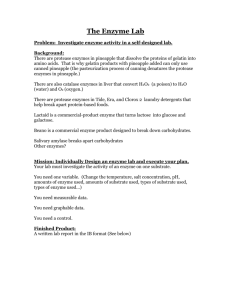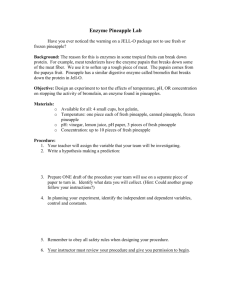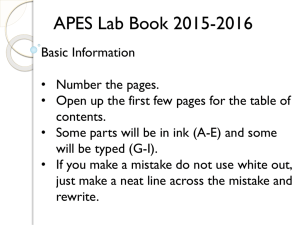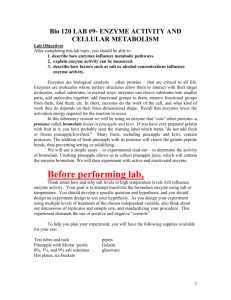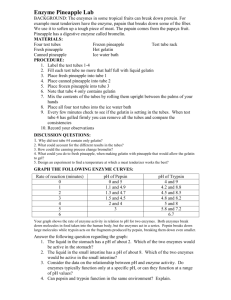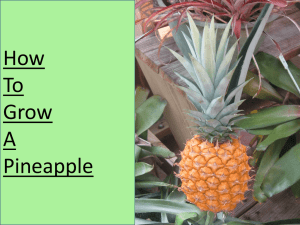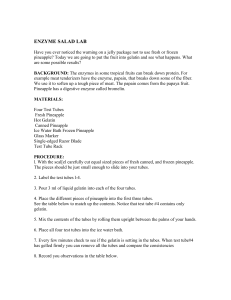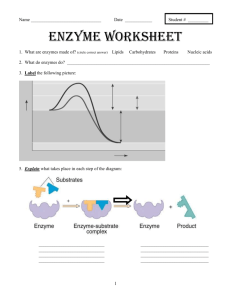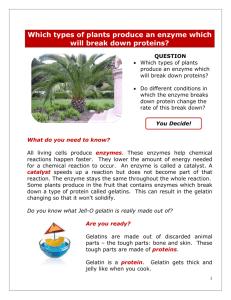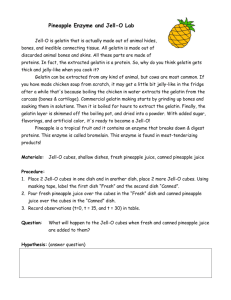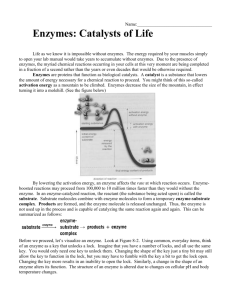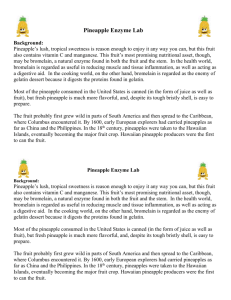Pineapple lab - Embrace Challenge
advertisement
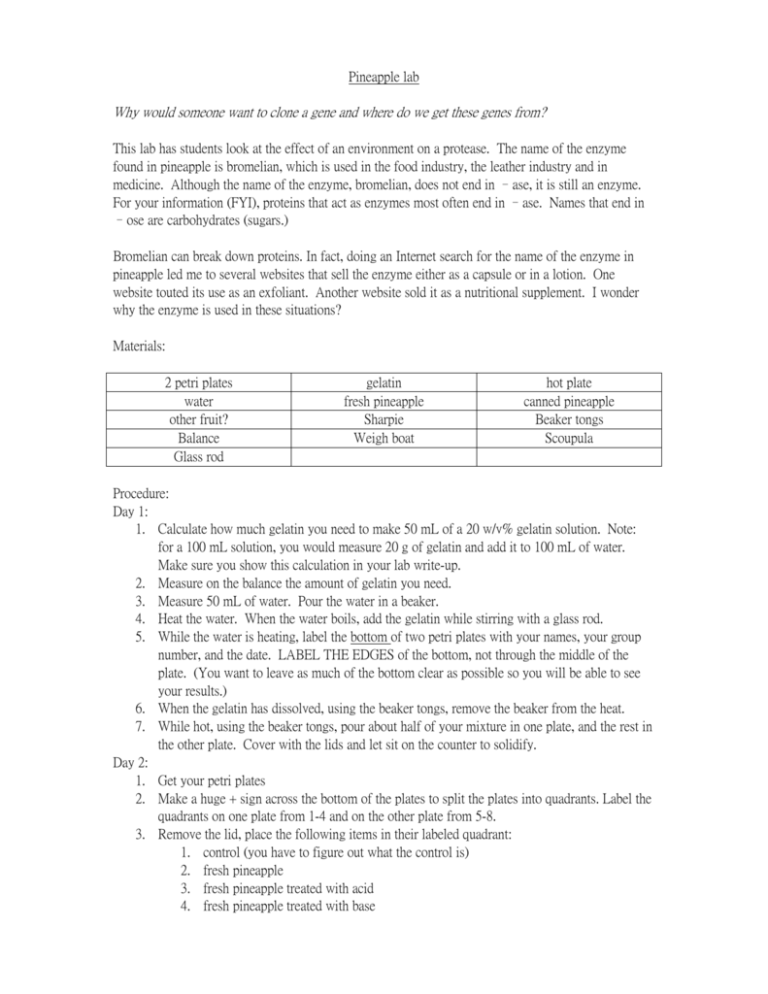
Pineapple lab Why would someone want to clone a gene and where do we get these genes from? This lab has students look at the effect of an environment on a protease. The name of the enzyme found in pineapple is bromelian, which is used in the food industry, the leather industry and in medicine. Although the name of the enzyme, bromelian, does not end in –ase, it is still an enzyme. For your information (FYI), proteins that act as enzymes most often end in –ase. Names that end in –ose are carbohydrates (sugars.) Bromelian can break down proteins. In fact, doing an Internet search for the name of the enzyme in pineapple led me to several websites that sell the enzyme either as a capsule or in a lotion. One website touted its use as an exfoliant. Another website sold it as a nutritional supplement. I wonder why the enzyme is used in these situations? Materials: 2 petri plates water other fruit? Balance Glass rod gelatin fresh pineapple Sharpie Weigh boat hot plate canned pineapple Beaker tongs Scoupula Procedure: Day 1: 1. Calculate how much gelatin you need to make 50 mL of a 20 w/v% gelatin solution. Note: for a 100 mL solution, you would measure 20 g of gelatin and add it to 100 mL of water. Make sure you show this calculation in your lab write-up. 2. Measure on the balance the amount of gelatin you need. 3. Measure 50 mL of water. Pour the water in a beaker. 4. Heat the water. When the water boils, add the gelatin while stirring with a glass rod. 5. While the water is heating, label the bottom of two petri plates with your names, your group number, and the date. LABEL THE EDGES of the bottom, not through the middle of the plate. (You want to leave as much of the bottom clear as possible so you will be able to see your results.) 6. When the gelatin has dissolved, using the beaker tongs, remove the beaker from the heat. 7. While hot, using the beaker tongs, pour about half of your mixture in one plate, and the rest in the other plate. Cover with the lids and let sit on the counter to solidify. Day 2: 1. Get your petri plates 2. Make a huge + sign across the bottom of the plates to split the plates into quadrants. Label the quadrants on one plate from 1-4 and on the other plate from 5-8. 3. Remove the lid, place the following items in their labeled quadrant: 1. control (you have to figure out what the control is) 2. fresh pineapple 3. fresh pineapple treated with acid 4. fresh pineapple treated with base 5. canned pineapple 6. fruit (the type depends upon what is brought to class) 7. fresh pineapple heated in boiling water 8. fresh pineapple washed in tap water 4. Put the lids back on. (If you labeled the bottoms, does it matter which lid goes on which plate?) 5. Set the plates in the box that will go into the refrigerator. Day 3: 1. Write detailed observations of what happened with each item. 2. Answer results questions 3. Write a nice, fancy lab report full of bells and whistles. Data: Keep track of what you did and what things looked like. Make sure you draw your results. Describe what the items looked like in words, too. Results: 1. What is a control? What was your control? Why did you choose that for a control? 2. Why would proteases be used in the food industry? Give an example of something you would buy at the grocery store that was made to include a protease. 3. Why would someone want to put pineapple enzymes on their skin? 4. If we wanted to get large volumes of the pineapple enzyme, how can we do it? Design an experiment that would let us obtain as much bromelian enzyme as possible. What environmental things must be considered? Can it be harvested in an acidic environment? What about a basic environment? Is the enzyme temperature sensitive? 5. Other than the items mentioned in this lab sheet, find one other product that is made with a protease as a part of it. What is the name of that product? (Can’t be the same answer as question 2.) 6. Other than sanitary reasons, can you think of a second reason why pineapple processors are required to wear gloves and surgical masks? 7. Redraw and fill in the following chart: (Place an X in the most appropriate column) Item No effect on protease Small effect on protease Some effect on protease Large effect on protease Refrigeration Boiling water Acid Base Tap water Canning process 8. Of the two fruits you used, which one has more protease activity? What is your evidence? Getz 2002
